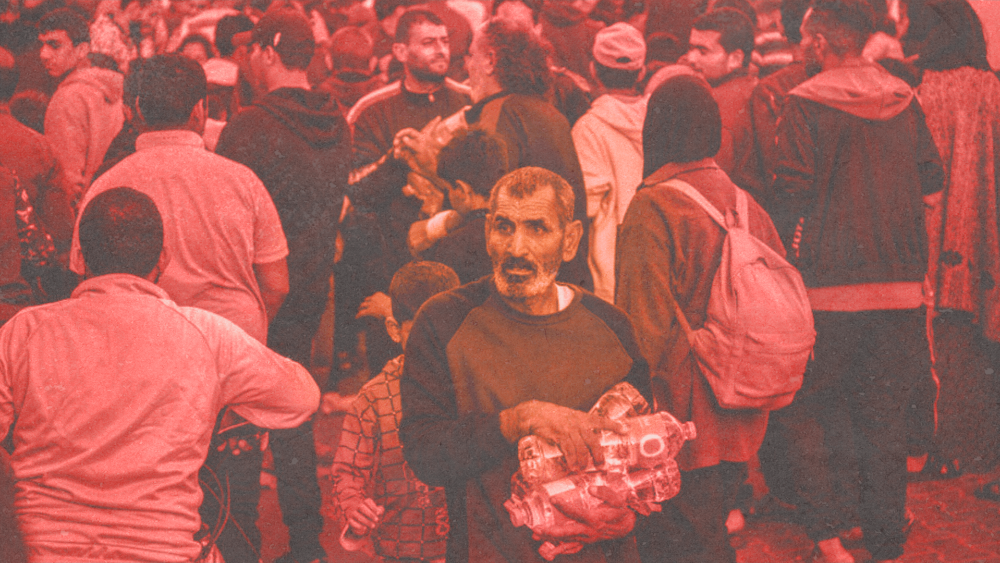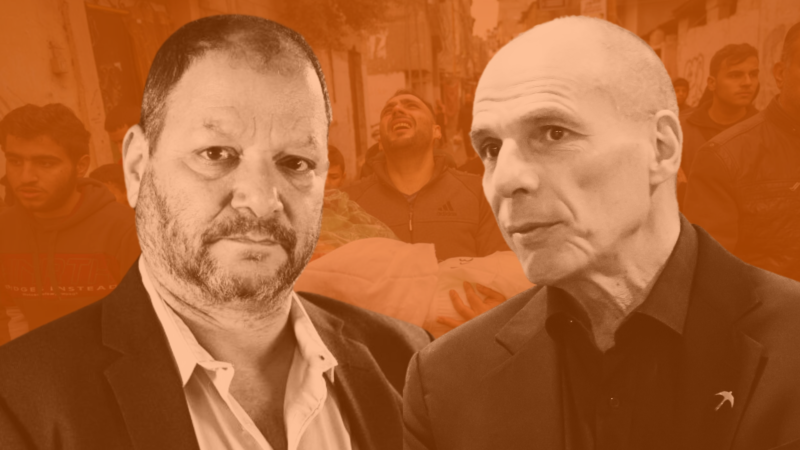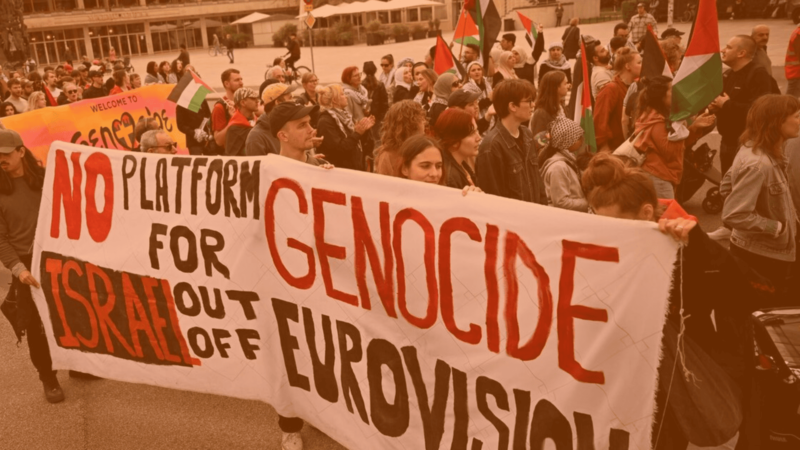The number of Palestinians killed by Israel since October 7 is more than 20,000 according to the Gaza Health Ministry, although no one can give an exact number under these circumstances. As I write, in early December, Israel has just bombed a residential bloc in the crowded Shuja’iyya district in Gaza City, destroying 50 more houses on top of their residents. The amount of destruction brought upon the people of Gaza, unseen since 1948, suggests one thing: Israel’s clear intention to depopulate Gaza, a plan that Tel Aviv tried to implement in the past but has never succeeded at.
While grieving the dead, Gazans are also mourning the loss of familiar landscapes as major landmarks in Gaza City turn to rubble. Israel seems intent on eradicating not just Gaza’s future, but its past. Churches, universities, cultural sites and the city’s main archive, which housed more than 100 years of historical records, have been destroyed in airstrikes. In early December 2023, Israel bombed the Great Omari Mosque, the largest mosque in the city and the site of thousands of years of history spanning multiple faiths. On that site is believed to have stood the temple of Dagon central to the biblical story of Samson and Delilah, which later became a Byzantine church to the patron god of Gaza, Marnas, which Rome then destroyed to build a Christian church, whose ruins were used to build the mosque.
But Gaza’s people, known for their love for spices and chiles (brought to the Arabian Peninsula through Gaza’s old seaport), have always been stubborn. The coastal enclave has been conquered and destroyed numerous times in the past 3,500 years; the city’s symbol is the phoenix, rising from the ashes. Alexander the Great lost three battles before conquering Gaza; the Allied Forces during World War I, more than two millennia later, lost two.
Gaza was the last Palestinian city to convert to Christianity, around the year 400. After the Islamic conquest of Palestine, in 636, a strong Christian minority remained (although it has dwindled to 1,000 people in recent years, as young Christians fled the occupation).
In 1948, the Greater Gaza district included 45 villages, mostly agricultural communities. All of these villages were ethnically cleansed by Zionist militias seizing the land. The Palestinians from these villages ended up as refugees in what became the Gaza Strip, a tiny territory that makes up 1.3% of historic Palestine. Between May and October 1948, the population of Gaza tripled, from 100,000 to 300,000.
Today, the population is 70% refugees. Since 2007, Gazans have been living under a tight Israeli land, air and sea blockade, suffocating their potential and their ability to lead a normal life. The unemployment among young people has risen to 70%. Hundreds of Palestinians have died waiting for Israel to issue permits for access to medical care. In 2007, my sister, 26 at the time, needed a minor surgery, but her application to leave Gaza was denied for a week; when she was finally able to have the surgery, she was unable to handle it, and she lost her life.
Palestinians in Gaza have routinely been targeted by the Israeli Defense Forces, with 830 killed in 2008; 1,040 in 2009; 250 in 2012; 2,270 in 2014; 260 in 2018; another 260 in 2021; and thousands killed (and tens of thousands injured) since October 7. On October 7, Hamas attacked Israeli military sites and communities close to the Gaza border, killing some 1,200 Israelis — more than 350 of whom were reportedly soldiers. Israeli Defense Minister Yoav Gallant then described Palestinians in Gaza as “human animals” and decreed that no fuel, electricity, water or internet access would be allowed into Gaza going forward.
That announcement alone was an effective death sentence for the 2.3 million Palestinians in Gaza, driving the belief that Israel’s goal goes beyond eliminating Hamas and toward making Gaza free of Palestinians by any means necessary.
The electricity and internet blackouts make reporting our deaths difficult. Gaza’s Health Ministry estimates more than 50,000 others have been injured. By the end of November, 60% of Gaza’s houses were destroyed or damaged.
“I strolled through the western areas of Gaza City and witnessed a level of destruction reminiscent of World War II,” Refaat Alareer told In These Times from Gaza City. “It feels as though tanks played a deliberate and methodical game of destruction, targeting homes, buildings, businesses, infrastructure, schools, mosques, trees, powerlines and poles. The way Israel is ravaging Gaza suggests repercussions that will shape life for generations to come.”
Alareer had decided not to move south at Israel’s order; even those who did were not safe. Thousands have been killed by bombardments in the south, and on Dec. 3, 2023, Israel invaded southern Gaza.
Not long after providing that commentary, on Dec. 6, 2023, Alareer was killed by an Israeli bomb.
As Palestinians in Gaza run out of food and water, death by starvation is as imminent as death by ongoing airstrikes. Prior to October 7, 500 aid trucks would enter Gaza daily, providing the necessities the blockade restricts. The hundreds of trucks that entered Gaza during the brief humanitarian pause in early December were only a drop in an ocean of needs. My parents, in southern Gaza, received only three sacks of flour to feed the dozens of people sheltered at our house. They tell me the situation is getting worse every day. My mom has returned to using wood and fire to cook. Most of the time, my family does not have access to clean water. They are worried about being infected by stomach and skin diseases, which are rapidly spreading among displaced Gazans.
My timeline has turned into a graveyard. Already I have mourned the death of my graduate school classmate Dr. Raed Qadoura, along with 52 members of his extended family; my childhood friend Hassan Al-Najjar, along with his wife and children; and another childhood friend, Salah Al-Salhi, who left behind a wife and three children.
I have seen dozens of Palestinians crying over the loss of their beloved ones on TV. I don’t know what it will take for the world to stop the Israeli genocide in Gaza. The world didn’t say a word when Gaza ran out of water, 97% of which was unfit for human consumption even before October 7.
Is the world waiting for Palestinians to run out of tears to speak up?
Despite this miserable present, we look to history to teach us that brutal war machines do not outlast people’s determination for freedom. The Palestinian people — just as the Irish and the South African people and many other oppressed nations have — continue to seek to rise from the ashes.
This article was originally written by Yousef Aljamal for In These Times
Do you want to be informed of DiEM25's actions? Sign up here















